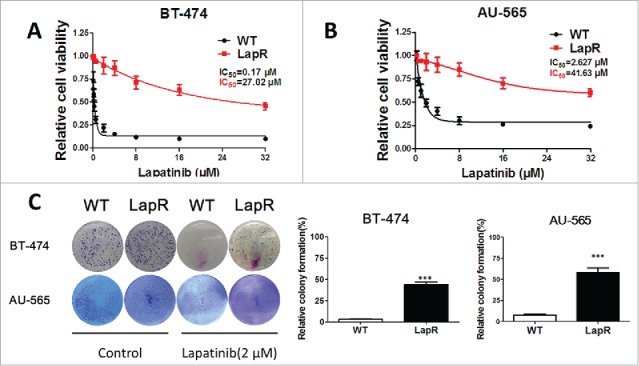Figure 1.

Establishing lapatinib-resistant cell lines. To establish stable lapatinib-resistant cell lines, we treated HER2-positive breast cancer cells BT-474 and AU-565 with lapatinib (2 μM) for 12 months. Then, the lapatinib-resistant cells were cultured in a medium containing 10% fetal bovine serum. (A) An MTT assay was used to analyze the sensitivity of BT-474WT and BT-474LapR cells treated with various concentrations of lapatinib (0–32 μM) for 3 d. (B) An MTT assay was used to analyze the sensitivity of AU-565wt and AU-565LapR cells to various concentrations of lapatinib (0-32 μM) for 3 d. (C) A colony formation assay was used to demonstrate the sensitivity of both BT-474 and AU-565 wild-type and resistant cells to lapatinib. The cells were treated with lapatinib (2 μM) every 3 days, and detection was performed 2 weeks after lapatinib treatment. ***p < 0.001.
